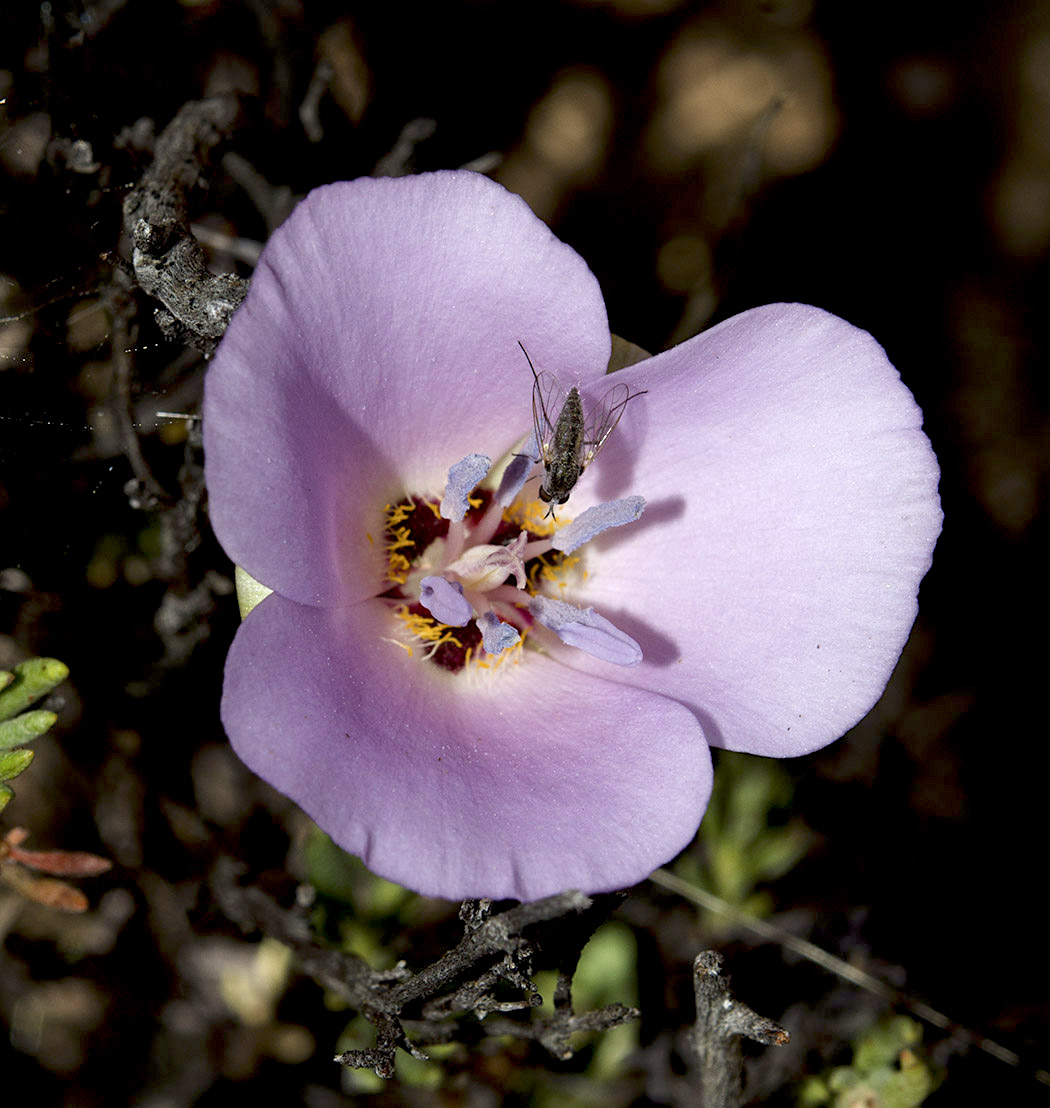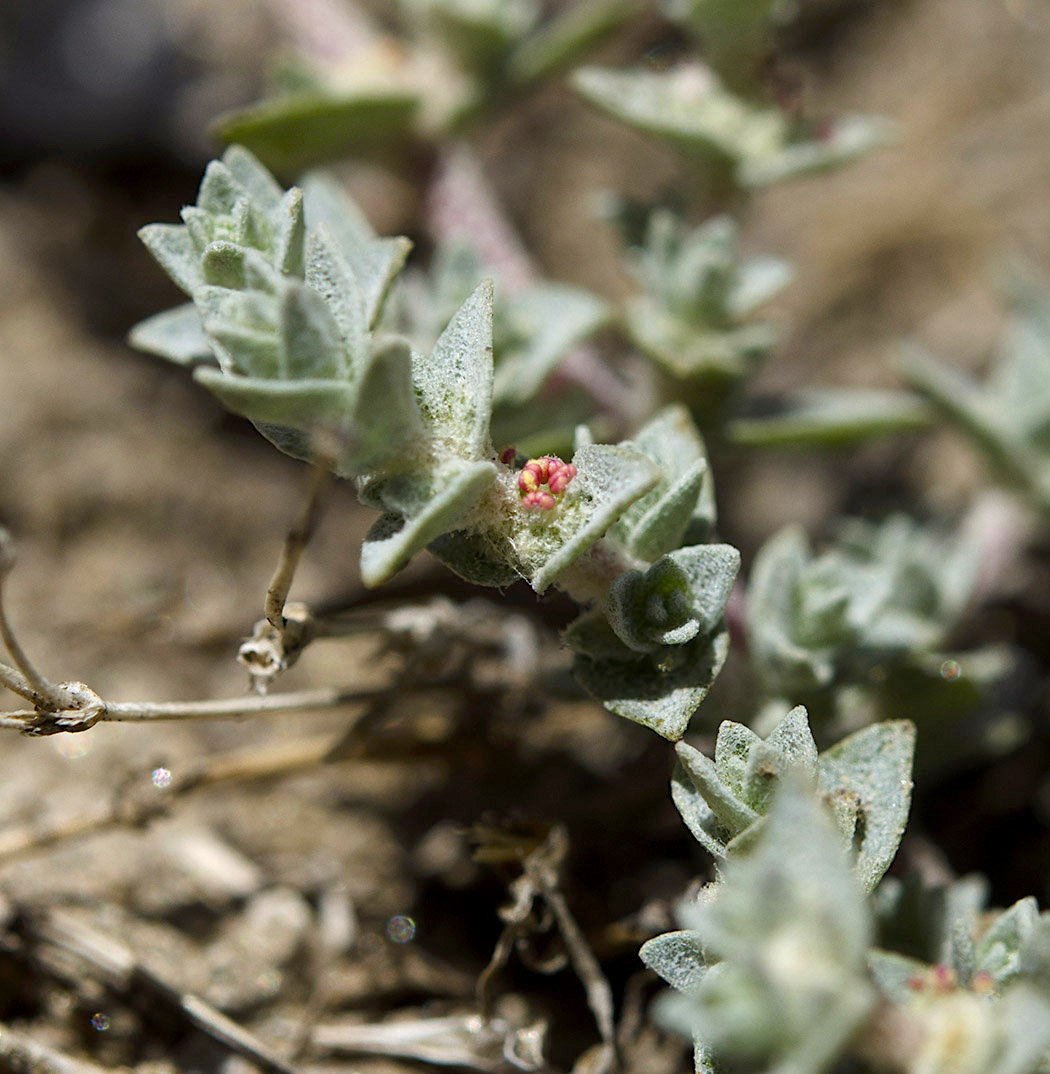By Fred Roberts, Rare Plant Botanist
You’ve probably noticed this. It is a dry year, a very dry year. According to the National Weather Service, the rainfall between October 1, 2017 and July 6, 2017 at Oceanside, my hometown, was 5.54 inches (141 mm), only about 55 percent of the yearly average of 9.90 inches (250 mm). Nearly three inches (75 mm) of that fell in a single day in January. Other places in Southern California saw even lower totals during the season. Alpine, for example has only seen 45 percent of normal rainfall. So yes, indeed, this is a dry year.
There are only two ways to deal with a year like this. Stay home and hope for better next year or look harder. Job necessity required I do the later for project surveying rare plants over the 8,600-acre Canyon and Canyon 2 burn. The two fires swept through the Anaheim Hills and northwestern Santa Ana Mountains last September.
Typically following fire, we see a spectacular bloom. Hillsides dressed in color: orange, magenta, blue, and white. Not so in 2018. The steep hillsides were largely open blackened earth with charred branches reaching for the sky. Color was scattered and patchy at best. At the north end of this, a place called Coal Canyon, we saw only rare shrubs and perennials. Rare annuals were largely absent. By mid-April conditions were so dry we thought our surveys would be over in a month.
A few miles to the south of Coal Canyon, at Weir Canyon, we were confronted by an entirely different condition. For much of April and early May it was actually green. Carpets of flowers were still absent but we saw more diversity and higher numbers among rare plants (again nearly all shrubs and perennials and hardly any annuals). A hallmark of this rainy season was wide variability in precipitation from one place to the next. This kept us busy for the rest of the spring. It would have been easy to dismiss surveys over much of the burn this year because of dry conditions but it was well worth looking.
Overall, San Diego County was drier then Orange County. Again, it was tempting to just put off any rare plant investigations until next year. Looking out at the dry hills along the coast was not inspiring. That in combination with my work in Orange County largely kept me from visiting San Diego sites until May.
In late May, I made the drive to Ramona where I met with Jim Theide of the U.S. Fish and Wildlife Service and Meredith Osborne of the Department of Fish and Wildlife. We were hunting for Parish’s Brittlescale (Atriplex parishii). This small and obscure annual, characterized by imbrecate, sessile, and gray-green leaves with a somewhat triangular outline, is one of the rarest plants in San Diego County and southern California as a whole. In San Diego County, Parish’s brittlescale is known to occur only at the Ramona Grasslands Preserve.
Beyond San Diego County, it has only been seen at one other location in recent years, the
seasonally flooded alkali plains west of Hemet in Riverside County. Our ranger escort let us through the western gate near the park headquarters. What greeted us was a pale golden-brown sea of spent grass. To the eye, nothing appeared green. It might as well have been October. Our prospects for finding the brittle scale seemed pretty dim. Yet not only did we find Parish’s Brittlescale, we also found the related Coulter’s Saltbush (Atriplex coulteri), a close relative, also quite rare in San Diego County. Looking at those dry fields, I would not have guessed that either of these rare saltbushes would be ingood shape this year. You just can’t tell without taking a look.
In early June, Jenny Moore, the Cleveland National Forest botanist, sent me a Mariposa Lily (Calochortus sp.) photo from south of I-8. The photo was of Munz’s Mariposa Lily (C. palmeri var. munzii), marked by yellow somewhat club-shaped hairs at the base of the petal vs. the white linear hairs of Splendid Mariposa Lily (C. splendens), the species it is most often confused with. She only found one plant but it was a great find.
Until recently, Munz’s mariposa lily was considered anendemic of Riverside County’s San Jacinto Mountains.Thanks to Jon Rebman of the San Diego Natural History Museum herbarium, we now know the species occurs in eastern San Diego County and Baja California as well. Almost no one has actually seen a San Diego specimen live in the field. Most of the records are based on redeterminations of herbarium specimens collected prior to Jon catching the ID error.
Jenny couldn’t return to the site right away so I went after Munz’s Mariposa Lily at Warner Springs and the Chihuahua Valley. These places are where other collections have been made, one as recently as 2010. I’d searched these locations each spring over the last five years without finding it. The trips had more or less mostly benefited Pippin, who usually got to splash in the creek. This year, these areas were bone dry and there were almost no flowers of any kind to be found.
Sometimes you are skunked by drought.
Jenny and I finally made it back to her site in early. After seeing the north county sites and knowing that we were getting out a month after Jenny first found the plants, we had few illusions about actually finding the plant.
On that hot day, just ahead of the first true heat wave for the year, even the chaparral looked a bit crisp. From a distance it had a brownish cast. We found no flower, stem, or fruit where Jenny first saw the plant. Perhaps there were others. After poking around in Great Basin Sage and Wright’s Buckwheat-dominated scrub for a while, Jenny found not one diminutive plant topped with a flower, but two.
So the moral of this story is even in the driest of years, there will still be rare plants around. Somewhere. Clearly not as many as there could be and probably species will be missing, especially annuals, but it is worth taking a look.
Still let’s hope we get more rain next year.
Photos by Fred Roberts


